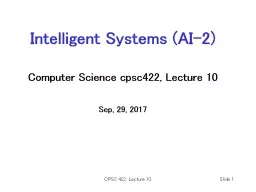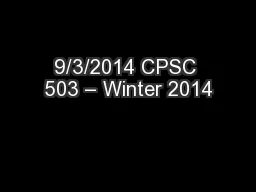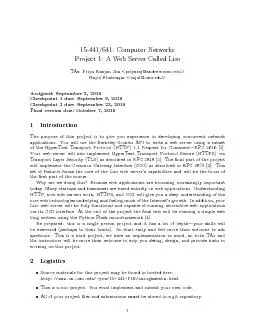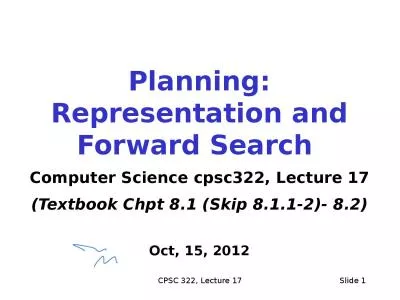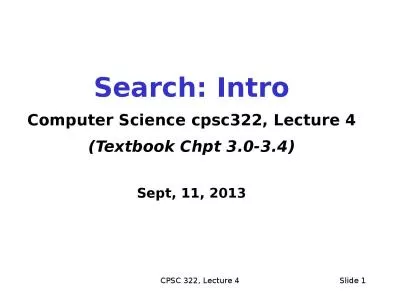PPT-CPSC 441 Tutorial – March 7,
Author : celsa-spraggs | Published Date : 2018-02-19
2012 TA Maryam Elahi Network tools ICMP I nternet C ontrol M essage P rotocol ICMP messages are IP packets Used by network hosts to announce Network errors Network
Presentation Embed Code
Download Presentation
Download Presentation The PPT/PDF document "CPSC 441 Tutorial – March 7," is the property of its rightful owner. Permission is granted to download and print the materials on this website for personal, non-commercial use only, and to display it on your personal computer provided you do not modify the materials and that you retain all copyright notices contained in the materials. By downloading content from our website, you accept the terms of this agreement.
CPSC 441 Tutorial – March 7,: Transcript
Download Rules Of Document
"CPSC 441 Tutorial – March 7,"The content belongs to its owner. You may download and print it for personal use, without modification, and keep all copyright notices. By downloading, you agree to these terms.
Related Documents




